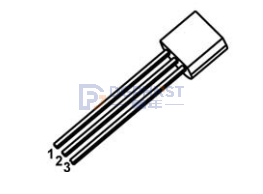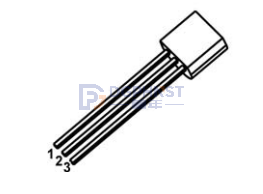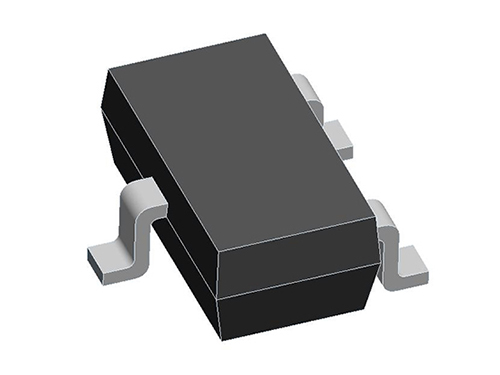The configuration parameters of the frequency converter are quite complex, and each parameter has its specific optional range. In practical applications, sometimes improper configuration of certain parameters can lead to abnormal operation of the frequency converter. Therefore, the primary task of debugging the frequency converter is to ensure that all parameters are set correctly. In order to assist everyone in better completing this task, we have summarized 16 basic methods for configuring frequency converter parameters for reference when setting relevant parameters.
1. Control method
There are various control methods, including speed control, torque control, PID control, etc. After selecting the control method, it is usually necessary to perform static or dynamic identification based on the expected control accuracy to optimize system performance and ensure that the frequency converter can operate accurately and stably.
In speed control mode, the frequency converter will adjust the motor speed based on the set speed value; In torque control mode, it focuses on maintaining a constant output torque of the motor. PID control is a more complex control strategy that automatically adjusts control parameters by continuously comparing actual output with expected output to achieve more precise control.
After selecting the appropriate control method, further identification process is also crucial. Static identification is usually carried out in a static state of the system to determine the basic parameters of the system; Dynamic identification is carried out during the operation of the system to obtain more realistic system characteristics. These identification processes help to set the parameters of the frequency converter more accurately, improve control accuracy, and ensure the stable operation of the system.
2. Minimum operating frequency
The minimum operating frequency refers to the minimum speed at which the motor can operate continuously and stably. When the motor operates at extremely low speeds for a long time, its heat dissipation performance will be seriously affected, which may lead to an increase in the internal temperature of the motor and even pose a risk of burnout. In addition, at low speeds, the current in the cable will also increase accordingly, generating too much heat, which can also cause the cable to heat up. Therefore, when setting the minimum operating frequency of the frequency converter, it is necessary to comprehensively consider the heat dissipation performance of the motor and the bearing capacity of the cable, to ensure that both the motor and the cable can operate under safe and stable conditions.
3. Maximum operating frequency
The maximum operating frequency refers to the maximum speed that the frequency converter can drive the motor to achieve, and this parameter is crucial in the frequency converter setting. For general frequency converters, their maximum frequency can usually reach 60Hz, and some high-performance frequency converters can even reach 400Hz. However, it should be noted that high-frequency operation can cause the motor to operate at extremely high speeds, which is a challenge for ordinary motors.
When running for a long time beyond the rated speed, the bearings of the motor may suffer from excessive wear, and the rotor of the motor may also be unable to withstand the high centrifugal force generated, which may lead to damage or even burning of the motor. Therefore, when setting the maximum operating frequency of the frequency converter, it is necessary to comprehensively consider the performance and usage conditions of the motor to ensure that it can operate within a safe and stable range.
4. Carrier frequency
The setting of carrier frequency is closely related to the heating situation of the frequency converter and system components. When the carrier frequency is set higher, more high-order harmonic components are generated, which not only affect the transmission efficiency of the cable, but may also exacerbate the heating situation of the motor, cable, and frequency converter itself. Especially in cases of longer cable lengths, this effect is more significant because the resistance of the cable increases with length, leading to more energy being lost in the form of thermal energy.
Therefore, when setting the carrier frequency, it is necessary to comprehensively consider the actual situation of the system, including factors such as the length of the cable, the heat dissipation performance of the motor, and the thermal load of the frequency converter. Through reasonable settings, it is possible to ensure the normal operation of the system while effectively reducing unnecessary heat loss and improving the overall operational efficiency of the system.
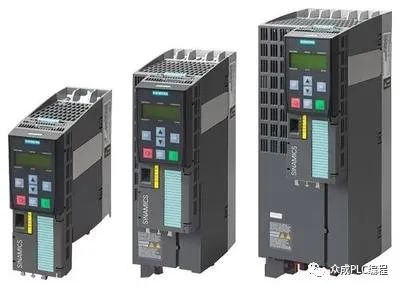
5. Motor parameters
In the parameter setting of the frequency converter, key indicators of the motor, such as power, current, voltage, speed, and maximum frequency, are indispensable elements. To ensure the accuracy of these parameters, we can directly refer to the information provided on the motor nameplate. The motor nameplate usually lists in detail the various specifications and characteristics of the motor, including rated power, rated current, rated voltage, rated speed, and maximum frequency, providing a reliable basis for the parameter setting of the frequency converter.
By setting these parameters reasonably, the frequency converter can more accurately control the operation of the motor, achieving efficient and stable operating effects. At the same time, this also helps to protect the motor from damage caused by improper parameter settings and extend the service life of the motor. Therefore, when setting the parameters of the frequency converter, it is essential to ensure the accuracy and completeness of the motor parameters to ensure the normal operation and safety of the entire system.
6. Frequency hopping
At certain specific frequency points, resonance phenomena may occur in the system or equipment, especially when the overall device is high. Similarly, when controlling the compressor, special attention should be paid to avoiding it reaching the surge point, as surge can have a serious impact on the stable operation of the compressor. Therefore, when setting the parameters of the frequency converter, it is necessary to implement a frequency hopping strategy, which is to set a certain frequency hopping range around these sensitive frequency points, so that the system can automatically avoid these frequencies that may cause resonance or surging, thereby ensuring the stable operation of the equipment and system. The application of this strategy is of great significance for improving the operational efficiency of equipment and extending its service life.
7. Acceleration and deceleration time
Acceleration time and deceleration time are very important parameters in frequency converter control. Acceleration time refers to the time required to increase the output frequency from 0 to the maximum frequency, while deceleration time is the time required to decrease from the maximum frequency to 0. The setting of these two times is usually determined by the rise and fall of the frequency setting signal.
During the acceleration process of the electric motor, in order to avoid the occurrence of overcurrent, it is necessary to limit the rate of increase of the frequency setting. Overcurrent may cause equipment damage or frequency converter tripping. Therefore, the setting of the acceleration time should ensure that the acceleration current does not exceed the overcurrent capacity of the frequency converter.
Similarly, during the deceleration process, in order to prevent excessive voltage in the smoothing circuit, it is necessary to limit the frequency set drop rate. If the voltage is too high, it may cause regeneration overvoltage and stall, which can cause the frequency converter to trip. Therefore, the setting of deceleration time should ensure that the voltage is within a controllable range.
To determine the optimal acceleration and deceleration time, calculations can be made based on the load. However, in actual debugging, a relatively long acceleration and deceleration time is usually set first, and then by observing the starting and stopping processes of the motor, check for overcurrent or overvoltage alarms. If there is no alarm, the acceleration and deceleration time can be gradually shortened, repeating this process several times until the optimal acceleration and deceleration time that neither causes an alarm nor meets actual needs is found.
Through this approach, it can be ensured that the frequency converter can not only ensure the stable operation of the motor in practical applications, but also effectively prevent various potential faults.
8. Torque increase
Torque enhancement, also known as torque compensation, is a compensation method for the problem of torque reduction in electric motors at low speeds. The core principle is to compensate for the torque reduction caused by the resistance of the motor stator winding by increasing the f/V (frequency to voltage ratio) within the low-frequency range. When set to automatic mode, the system will automatically increase the voltage during the acceleration process to compensate for the starting torque and ensure smooth acceleration of the motor.
On the other hand, if manual compensation is used, the optimal compensation curve needs to be selected through experiments based on the load characteristics, especially the starting characteristics of the load. This manual adjustment method can more accurately adapt to different load situations to achieve the best compensation effect.
It should be noted that for variable torque loads (such as fan and pump loads), the setting of torque boosting parameters is particularly crucial. If the parameters are not set properly, it may cause the output voltage to be too high at low speeds, which not only wastes electrical energy, but also may result in high current and inability to increase the speed of the motor when starting with load. Therefore, in practical applications, it is necessary to set torque boosting parameters reasonably based on specific load characteristics and motor performance to ensure the normal operation and efficient performance of the motor.
In addition, torque compensation technology is widely used in daily life and various industries. For example, in the operation of an electric motor, torque compensation technology can effectively reduce torque fluctuations, improve the operational efficiency and stability of the motor; During the operation of automotive engines, torque compensation technology can achieve torque compensation, improve the performance and fuel economy of automotive engines; In the operation of wind turbines and air conditioning compressors, torque compensation technology can also play an important role in improving equipment efficiency and reliability.
In summary, torque enhancement plays an important role as an effective compensation method in motor control and optimization. By setting reasonable parameters and applying them, the efficient and stable operation of the motor can be achieved, meeting the requirements under different load conditions.
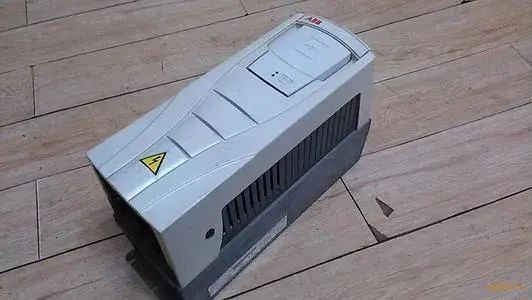
9. Electronic thermal overload protection
Electronic thermal overload protection is an important motor protection measure aimed at preventing damage to the motor due to overheating. This function monitors and calculates the operating current and frequency of the motor through the internal CPU of the frequency converter, thereby estimating the temperature rise of the motor and taking overheating protection measures if necessary.
Specifically, the working principle of electronic thermal overload protection is based on the proportional relationship between the rated current of the motor and the rated output current of the frequency converter. By setting a percentage value, which is the electronic thermal protection setting value, precise control of the overheating situation of the motor can be achieved. This setting value is calculated by dividing the rated current of the motor by the rated output current of the frequency converter and multiplying it by 100%.
In the "one to one" application scenario, where a frequency converter drives an electric motor, the electronic thermal overload protection function can be directly applied to the motor, effectively protecting it from overheating damage. However, in the application of "one to many", when a frequency converter needs to drive multiple motors, the situation becomes complex. Due to the inability of the frequency converter to directly monitor the overheating situation of each motor, thermal relays should be installed separately on each motor to achieve independent overheating protection for each motor.
A thermal relay is an electrical component that utilizes the thermal effect to operate. When the current of the motor exceeds its rated value, the thermal components inside the thermal relay will heat up and bend, triggering a protective action, cutting off the circuit, and protecting the motor from further damage.
In summary, electronic thermal overload protection is an efficient and flexible motor protection measure that can be configured and adjusted according to different application scenarios and needs. By setting reasonable electronic thermal protection settings and combining them with the use of thermal relays, the motor can be effectively protected from overheating damage, its service life can be extended, and the reliability and safety of the system can be improved.
10. Frequency limitation
Frequency limitation is an important function of frequency converters, which is used to set the upper and lower limits of the output frequency amplitude of the frequency converter. The setting of this function is mainly for two considerations: firstly, to prevent the output frequency from being too high or too low due to misoperation or external frequency setting signal source failure, thereby protecting the equipment from damage; The second is to limit or adjust the operating speed of the equipment according to actual application needs.
In practical applications, it is very important to set appropriate frequency limit values based on specific situations. For example, in some applications of belt conveyors, due to the small amount of material being conveyed, in order to reduce mechanical and belt wear, a frequency converter can be used for driving, and the operating speed of the belt conveyor can be limited by setting the upper limit frequency of the frequency converter. In this way, the belt conveyor can operate at a fixed and lower working speed, which not only meets the conveying needs but also extends the service life of the equipment.
In addition, the frequency limitation function can also be used to achieve other control requirements. For example, in certain applications that require precise speed control, precise control of device speed can be achieved by setting the output frequency range of the frequency converter.
It should be noted that when setting frequency limit values, consideration should be given to the actual operating conditions and needs of the equipment, to avoid setting values that are too high or too low and affect the normal operation and effectiveness of the equipment. At the same time, the frequency converter should also be regularly inspected and maintained to ensure its normal operation and the effectiveness of frequency limiting functions.
11. Bias frequency
Bias frequency, also known as bias frequency or frequency deviation setting, is an important function in frequency converters. When the frequency of the frequency converter is set by external analog signals (such as voltage or current), the bias frequency is used to adjust the output frequency at the lowest frequency setting signal. This feature is particularly useful during the debugging process, especially in situations where precise control of the output frequency of the frequency converter is required.
In practical applications, it is sometimes encountered that when the frequency setting signal is 0%, the output frequency of the frequency converter is not 0Hz, but a specific frequency value. At this point, the problem can be solved by setting the bias frequency. Specifically, if the output frequency of the frequency converter is xHz, setting the bias frequency to negative xHz can return the output frequency of the frequency converter to 0Hz.
In addition, some frequency converters allow for setting the bias polarity, which provides a more flexible control method. It should be noted that the set value of bias frequency needs to be determined according to the actual situation to ensure that the output frequency of the frequency converter meets the application requirements.
12. Frequency setting signal gain
Frequency setting signal gain is an important function of frequency converters, mainly used to compensate for the difference between the external set signal voltage and the internal standard voltage (usually+10V) of the frequency converter when using external analog signals to set the frequency. This difference may lead to a deviation between the actual output frequency and the expected frequency, and the frequency setting signal gain function is designed to address this issue.
When using external analog signals (such as voltage or current signals) to set the output frequency of the frequency converter, it is necessary to adjust the gain to ensure accurate frequency output because the voltage standards between the external signal source and the internal circuit of the frequency converter may be different. By setting an appropriate gain value, a correct correspondence can be established between the external analog signal and the output frequency of the frequency converter.
When setting the frequency and signal gain, it is usually necessary to consider the maximum value of the analog input signal. For example, when the analog input signal reaches its maximum value (such as 10V, 5V, or 20mA), the gain value can be determined by calculating the percentage of frequency that can be output. This frequency percentage actually reflects the proportional relationship between the external analog signal and the output frequency.
Using a specific example, assuming that the input range required for the given signal terminal of the frequency converter voltage is 0-10V, the corresponding output frequency should be 0-50Hz. However, if the external set signal only has a range of 0-5V, in order to maintain the output frequency of the frequency converter at 0-50Hz, it is necessary to set the frequency set signal gain to 200%. In this way, when the external signal is 5V, the frequency converter can correctly interpret it as the highest output frequency of 50Hz, thus achieving correct matching between the signal and frequency.
13. Torque limitation
Torque limitation is an important function in frequency converter control, which is mainly divided into two types: driving torque limitation and braking torque limitation. This function mainly calculates the torque through the CPU based on the output voltage and current values of the frequency converter, thereby achieving significant improvement in the impact load recovery characteristics of the motor during acceleration, deceleration, and constant speed operation.
The torque limiting function provides a powerful starting torque, ensuring that the motor can start smoothly during the starting phase. During steady-state operation, this function controls the motor's slip and limits the motor's torque to a preset maximum value. When the load torque suddenly increases or the acceleration time is set too short, the drive torque limiting function can prevent the frequency converter from tripping due to overload, ensuring the stable operation of the motor.
The braking torque limit function mainly focuses on the deceleration process of the motor. When the set value of braking torque is small, the braking force will be greater, which is suitable for situations that require rapid acceleration and deceleration. However, if the braking torque setting value is too large, it may lead to overvoltage alarm phenomenon. When the braking torque is set to 0%, the motor can decelerate to a stop without using a braking resistor during deceleration. However, on certain loads, this may lead to a brief idle phenomenon, causing the frequency converter to repeatedly start, causing significant current fluctuations, and in severe cases, even causing the frequency converter to trip.
14. Acceleration and deceleration mode selection
Acceleration and deceleration mode selection, also known as acceleration and deceleration curve selection, is an important parameter setting in frequency converter control. It determines the speed variation characteristics of the electric motor during acceleration and deceleration, which is of great significance for ensuring the stable operation of the equipment and extending its service life.
Generally speaking, frequency converters provide three types of acceleration and deceleration curves for users to choose from: linear, nonlinear, and S-shaped. A linear curve is the simplest type, and its speed variation during acceleration and deceleration is constant, suitable for most constant torque loads. Nonlinear curves are suitable for variable torque loads, such as fans, which require different torque changes during acceleration and deceleration to match the actual needs of the load. The S-shaped curve is smoother, with slower changes in acceleration and deceleration, making it suitable for applications that are sensitive to speed changes, such as precision machinery.
When selecting the acceleration and deceleration curve, it is necessary to comprehensively consider the torque characteristics of the load and the actual demand. For example, when debugging the frequency converter of the boiler induced draft fan, there may be problems with self rotation and reversal caused by the flow of flue gas. In this case, choosing an S-shaped curve can slow down the frequency rise of the motor during startup, thereby avoiding the frequency converter from tripping due to overload.
It should be noted that although the selection of acceleration and deceleration curves has a significant impact on the operational performance of the frequency converter, it is not the only determining factor. In practical applications, it is necessary to combine other parameter settings and debugging experience, comprehensively consider various factors, in order to achieve the best operating effect.
In addition, for some loads with special requirements, special control strategies or algorithms may also need to be adopted to achieve more precise and efficient control. For example, some high-end frequency converters support custom acceleration and deceleration curves, and users can set the speed change characteristics of the acceleration and deceleration process according to their own needs to meet the needs of specific application scenarios.
15. Torque vector
Torque vector control is an efficient motor control technology based on a theoretical premise that asynchronous motors and DC motors have the same torque generation mechanism. The core idea of this control method is to decompose the stator current into specified magnetic field current and torque current, and control them separately. Subsequently, these two currents are combined and the combined stator current is output to the motor. In principle, torque vector control can achieve similar control performance as DC motors through this approach.
In practical applications, the torque vector control function enables the motor to output maximum torque under various operating conditions, especially in the low-speed operating area of the motor. In addition, it can also improve the dynamic response and stability of the motor, thereby achieving higher operating efficiency and energy utilization. Therefore, torque vector control is particularly suitable for applications that require high-precision control, such as machine tools, printing machines, and textile machinery.
Most modern frequency converters use non feedback vector control. This control method can compensate for slip based on the magnitude and phase of the load current, thereby giving the motor excellent mechanical characteristics. For most application scenarios, this non feedback vector control can already meet the requirements without the need to set up speed feedback circuits outside the frequency converter.
One of the functions related to torque vector control is slip compensation control. Its main function is to compensate for speed deviation caused by load fluctuations. By adding a slip frequency corresponding to the load current, the control accuracy and stability of the motor can be further improved. This function is particularly important in situations where precise speed control is required, such as positioning control.
16. Energy saving control
Energy saving control is a very important aspect in the design of frequency converters, especially in the application of reduced torque loads such as fans and water pumps. The characteristic of these loads is that as the speed decreases, the load torque decreases proportionally to the square of the speed. The frequency converter with energy-saving control function is designed with a dedicated V/f (voltage/frequency) mode for this type of load.
In this mode, the frequency converter can automatically adjust the output voltage based on the load current of the motor, thereby optimizing the operating efficiency of the motor and achieving energy-saving goals. Users can choose to enable or disable this feature based on actual operating conditions.
However, in practical applications, some users may encounter some problems, such as frequent tripping of the frequency converter after enabling certain parameters (such as electronic thermal overload protection and frequency limit) during equipment modification. This may be due to the following reasons:
① The parameter difference between the original motor and the motor required by the frequency converter is too large. In this case, it is necessary to make appropriate adjustments to the motor parameters or replace the appropriate motor.
② Insufficient understanding of the parameter setting function. For example, energy-saving control functions are usually only applicable to V/f control mode and not to vector control mode. If the user mistakenly enables the energy-saving control function in vector control mode, it may cause problems.
③ Vector control mode has been enabled, but manual setting and automatic reading of motor parameters have not been carried out correctly, or the reading method is improper. Vector control requires precise motor parameters to achieve optimal performance and stability. If the user does not set these parameters correctly, it may lead to unstable operation of the frequency converter.


